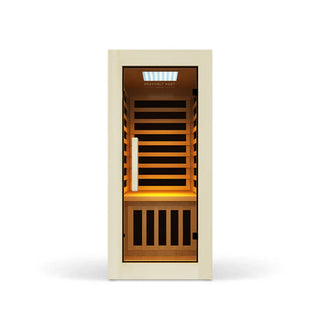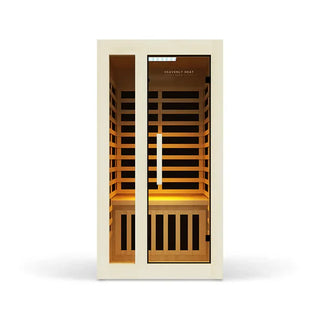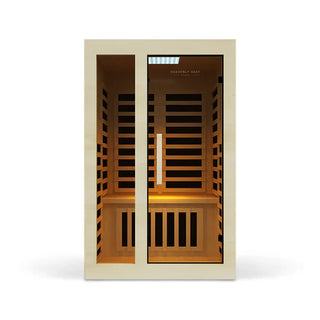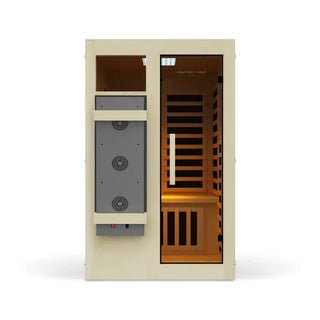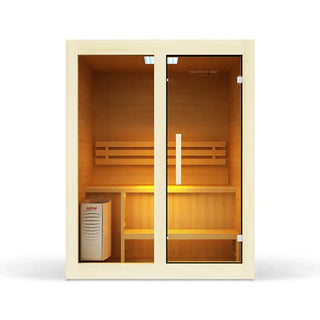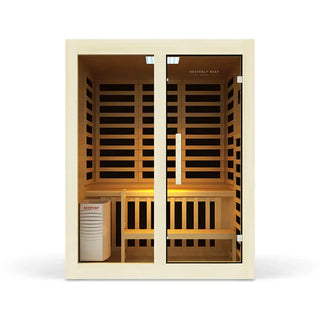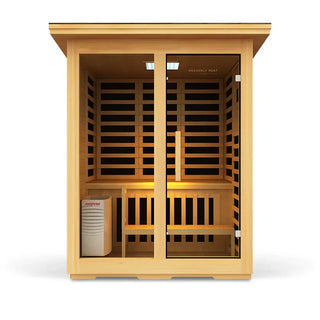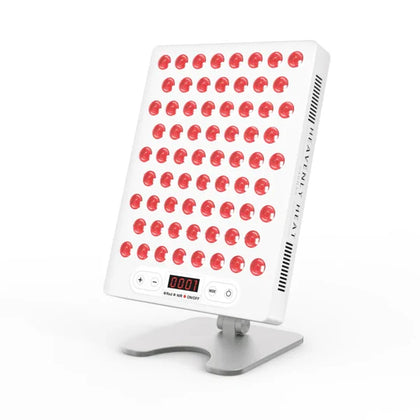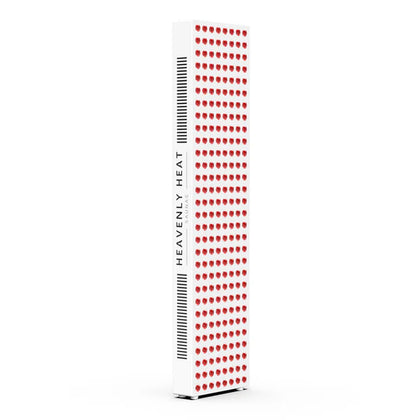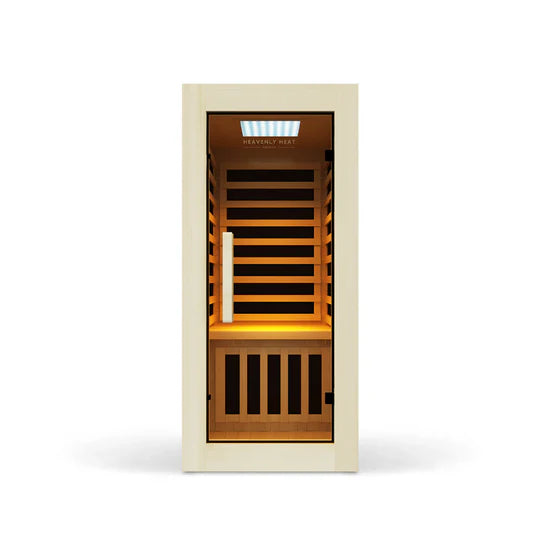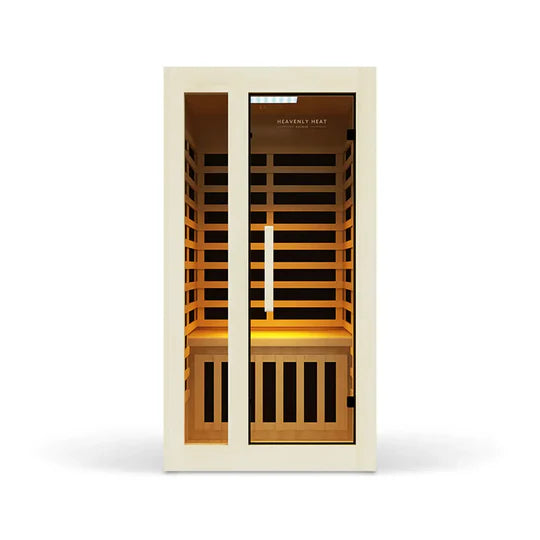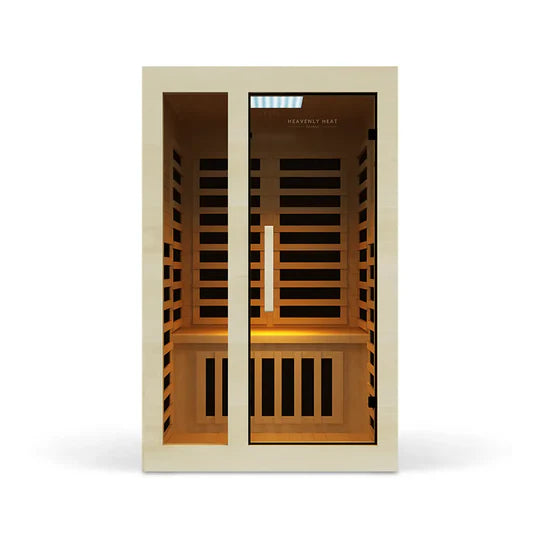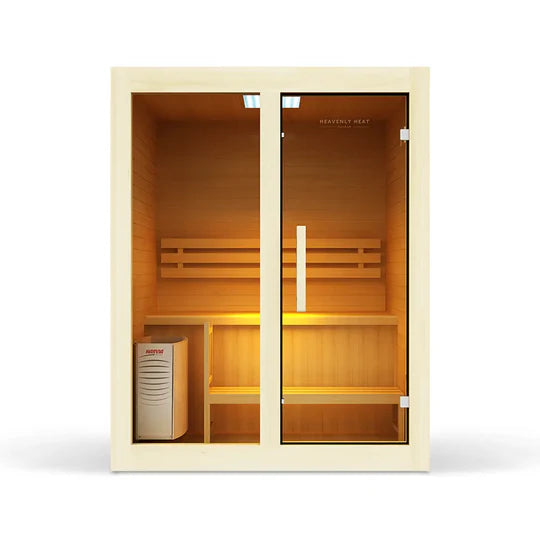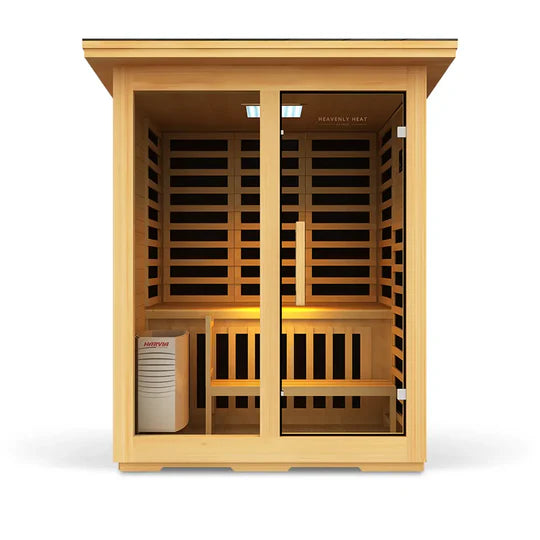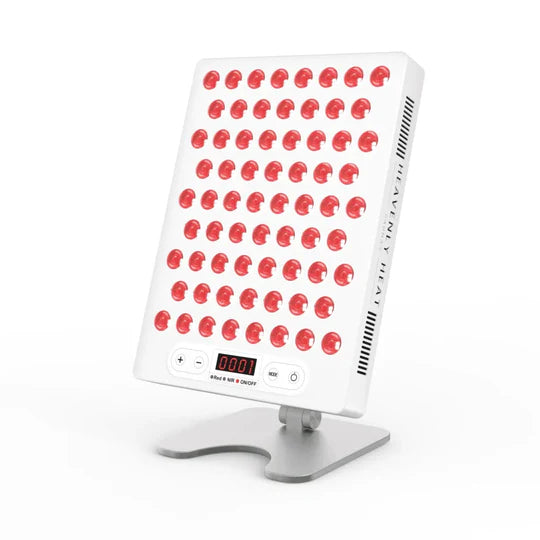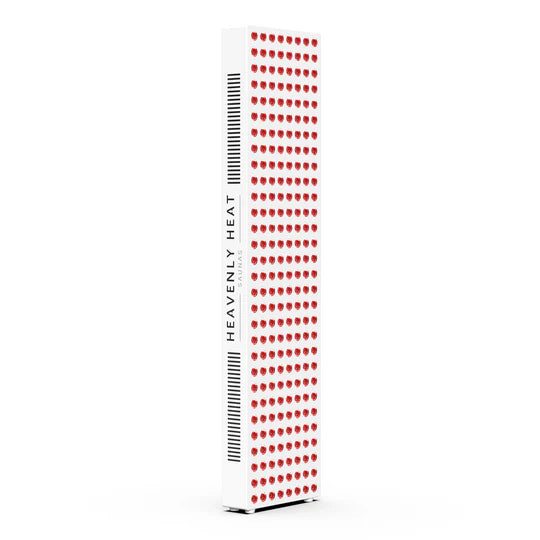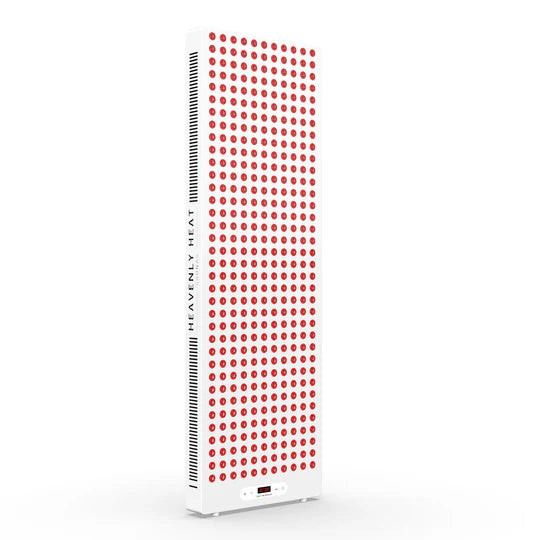Does Red Light Therapy Increase Testosterone?

Table of contents
Low testosterone (Low-T) can leave you feeling fatigued, irritable, and disconnected from life.
Symptoms like reduced sex drive, loss of muscle mass, and even depression are common, affecting your confidence and daily functioning.
Ignoring it can worsen health issues like obesity and heart disease. But what if a simple, non-invasive solution like red light therapy could help boost your testosterone levels naturally? Keep reading to find out!
Key Takeaways
-
Red Light Therapy Supports Testosterone: Using specific wavelengths (660nm & 850nm) may help boost testosterone naturally.
-
Target the Right Areas: Exposing the testicles (for men) or thyroid/adrenal glands (for women) can maximize benefits.
-
Timing Matters: Morning sessions boost energy, while evening use aids relaxation and sleep.
-
Enhances Libido & Fertility: Improves circulation, hormone balance, and sperm health for better reproductive function.
- Combine with Lifestyle Changes: Strength training, quality sleep, and a nutrient-rich diet further support hormone balance.
What is Testosterone ?
The Cleveland Clinic explains that testosterone is a natural steroid hormone primarily produced by the testicles in males and, to a lesser extent, the ovaries in females. It plays a critical role in developing male physical traits and maintaining reproductive health, muscle mass, and bone density. Testosterone levels naturally fluctuate throughout life, especially peaking during adolescence and slowly declining with age.
Several conditions can disrupt testosterone balance. Common causes include:
Polycystic ovary syndrome (PCOS): Increases androgen production in females, causing symptoms like acne and excess hair.
Congenital adrenal hyperplasia: A genetic disorder where the adrenal glands produce excess testosterone.
Tumors: Growths in the ovaries, testicles, or adrenal glands can lead to hormone overproduction.
Age-related decline (late-onset hypogonadism): Affects males over 40, often linked to obesity or diabetes.
Hypothalamic or pituitary dysfunction: Disrupts hormonal signaling needed to regulate testosterone levels.
Imbalanced testosterone can interfere with daily life,causing fatigue, mood changes, decreased libido, and fertility issues. Fortunately, treatment options exist. Medical therapies like hormone replacement or lifestyle changes such as weight management and strength training may help restore balance. With proper guidance, many regain their energy, confidence, and quality of life, offering a hopeful outlook for those affected.
THE SCIENCE BEHIND RED LIGHT THERAPY AND TESTOSTERONE
One of the biggest advantages of red light therapy is its potential to address some underlying causes of low testosterone, such as testicular dysfunction and oxidative stress, without the invasive effects of traditional hormone treatments.
Researchers have begun exploring how low-level laser therapy (LLLT) might improve testosterone production by stimulating the testes at specific wavelengths and intensities.
In a 2013 animal study , involving 30 male Sprague-Dawley rats, researchers exposed testicular tissue to two different wavelengths, 670 nm and 808 nm, to evaluate changes in serum testosterone (T) levels.
They found that red light therapy at 670 nm significantly elevated testosterone levels by day four, without producing any visible histopathological side effects.
The researchers concluded that “LLLT using a 670-nm diode laser was effective in increasing serum T level without causing any visible histopathological side effects,” suggesting that LLLT could serve as a non-invasive alternative to conventional testosterone replacement therapies.
While these early results are promising, this isn’t a cure, and more research in human subjects is needed to confirm long-term safety and effectiveness.
Best Wavelengths of Red Light for Hormone Optimization
- Using red light the right way can help balance your hormones: Red light therapy can support hormone regulation, but it works best when used with the correct wavelengths .
- 660nm and 850nm wavelengths give the best results: Most benefits for hormone health come from red and near-infrared light between 600nm and 900nm , especially 660nm and 850nm .
- 660nm works on the surface where many hormone signals start: The 660nm red light doesn’t go deep but activates cells on the surface , which can still play a big role in hormone-related processes.
- 850nm goes deeper and supports hormone-making cells: The 850nm near-infrared light reaches deeper into the body, boosting mitochondria in hormone-producing tissues for better function.
- Science shows the 630nm–950nm range supports hormone activity: Studies confirm that light between 630nm and 950nm is well absorbed by the body and stimulates cellular changes that support hormone health .
- Using both red and near-infrared light together works even better: Combining 660nm and 850nm gives you more complete coverage , helping red light therapy work better for balancing hormones.
Best Body Areas to Expose for Hormone Benefits
- Exposing the right body parts helps your hormones work better: To get the most out of red light therapy, it’s important to shine the light on specific parts of the body. This makes the treatment more effective for hormone support.
- Shining light on testicles and lower belly can support male hormones: For men, exposing the testicles may help with testosterone production. The lower belly and lower back are also helpful spots to support hormone health.
- Women can support hormone balance by targeting the neck and back: For women, exposing the thyroid (in the neck) and adrenal glands (near the lower back) may help with managing stress, energy, and hormone levels.
- Men and women react differently to everyday stress, which affects hormones: Men usually deal with more physical stress like loud noise or vibrations, while women often face emotional stress. Both can throw off hormone balance in different ways.
- Everyone needs different light exposure depending on their lifestyle: Because of these differences, red light therapy should be adjusted to fit each person’s daily life and how their body reacts to stress.
- Shining light on thin skin like the neck or stomach works faster: Full-body exposure is helpful, but focusing on areas where the skin is thinner, like the neck or stomach, can help the body absorb light more quickly and show better results.
Best Time of Day to Use Red Light Therapy
- Doing red light therapy in the morning can give you more energy: Using red light therapy at the start of the day helps boost your blood flow and energy levels, which can make you feel more awake and ready to go.
- Using red light at night helps your body relax and sleep better: At bedtime, red light can calm your body, help you fall asleep faster, and support deeper, more restful sleep by increasing melatonin levels.
- Too much red light at night can mess with your natural sleep cycle: Even though red light helps with sleep, using it too often or too late at night might confuse your body’s internal clock and affect your overall health.
- Using red light at the same time every day gives the best results: No matter what time you choose, morning, evening, or both, what really matters is doing it regularly and sticking to a routine that suits your body.

Can Red Light Therapy Improve Libido and Sexual Performance?
- Red light helps your body naturally boost desire: Red light therapy supports better blood circulation and hormone balance, which are both important for a healthy sex drive. It works with your body’s natural systems to improve libido over time.
- Better blood flow helps men perform stronger in bed: For men, this therapy increases blood flow to the private areas, which helps with stronger and more reliable erections.
- Women can feel more aroused with better circulation: Improved blood flow and hormone support can help women feel more naturally aroused and ready, making intimacy more enjoyable.
- A natural way to fix low sex drive without pills: Red light therapy offers a drug-free option to improve libido by gently stimulating your body’s natural energy and hormone response.
- More testosterone can mean better sexual satisfaction: According to expert Prof. Andrea Fagiolini , increased testosterone levels from red light therapy can lead to greater sexual satisfaction and performance.
- Sexual issues are common, and you're not alone: Low libido affects about 30% of women and 15% of men, while sexual dysfunction touches nearly half of all women and one-third of men. Red light therapy could be part of the solution.
- This therapy can support sperm health and hormone levels: Red light has shown positive effects on testosterone, sperm quality, and hormone balance, all essential for healthy sexual function.
- It improves blood flow by relaxing blood vessels: The therapy boosts nitric oxide in the body, helping blood vessels relax. This improves circulation to intimate areas, supporting both arousal and performance.
- It may also support women’s hormones in the long run: While more research is ongoing about its effects on estrogen, red light therapy is being studied as a full-body, hormone-friendly option for improving sexual health.
Does Red Light Therapy Enhance Sperm Production and Fertility?
- Red light gives sperm more energy to do their job: Red light therapy helps sperm work better by improving their energy system, which makes them stronger and more active.
- It can naturally improve sperm count and movement: Using red light regularly may lead to more sperm, better movement, and higher overall sperm quality without needing medication.
- It helps sperm move better without harming their DNA: Research also shows that Red light therapy boosts how well sperm swim while keeping their DNA safe from damage, making it both safe and effective.
- A healthier body environment leads to better fertility: This therapy supports a better inner environment for sperm to grow and survive, which can improve chances of having a baby.
Can Red Light Therapy Help with Erectile Dysfunction?
- Red light helps blood reach where it’s needed for stronger erections: Red light therapy naturally improves blood flow by widening blood vessels, which makes it easier to get and maintain strong erections.
- It supports the body in making more nitric oxide for better performance: Nitric oxide is important for relaxing blood vessels. Red light therapy boosts its levels, which helps blood flow smoothly during intimacy.
- Your body produces more testosterone and feels less inflammation: Red light therapy encourages your body to make more testosterone and reduces swelling inside blood vessels, both important for better sexual health.
- Using it regularly a few times a week gives better results: To see improvements, it’s best to use red light therapy for 10–20 minutes per session, about 3–5 times each week.
- It’s extra helpful for men with diabetes who struggle with ED: For men with diabetes, red light therapy not only improves blood flow but also helps prevent nerve damage that can lead to erectile problems.
Combining Red Light Therapy with Exercise for Better Results
- Using red light with exercise gives better performance and faster recovery: Pairing red light therapy with your workouts increases energy at the cellular level and helps muscles repair quicker. This means you feel stronger, recover faster, and get more out of each session.
- Red light after strength training reduces soreness and speeds up healing: Using red light therapy right after lifting weights or intense workouts helps calm inflammation and speeds up muscle recovery, so you're ready to train again sooner.
- Regular red light use makes muscles stronger and prevents injuries: When used consistently, red light therapy improves blood flow and tissue repair. This helps your muscles and ligaments handle stress better, lowering your risk of injury.
- The right time to use red light is within 10–20 minutes after workout: For the best results, apply red light therapy shortly after you finish exercising. This is when your body is most ready to absorb the benefits and heal more efficiently.
Red Light Therapy vs. Supplements for Hormone Balance
- Red light therapy helps your cells work better, which may support hormone balance: Red light therapy may help optimize testosterone production by stimulating mitochondrial function and improving how your cells create energy. This can support your body’s natural hormone processes.
- There’s some early proof that red light may affect DHT, but we still need more research: Some studies suggest red light therapy could influence hormones like dihydrotestosterone (DHT), but this isn’t fully proven yet. It’s a promising area, but science hasn’t confirmed it completely.
- Supplements give your body the nutrients it needs to make hormones: Vitamins and minerals from supplements, like zinc, magnesium, and vitamin D, directly support hormone creation and balance. They provide the raw materials your body uses to keep hormones stable.
- Using both together may give better results than using just one: Combining red light therapy with the right supplements may support overall hormonal health more effectively. Each method works differently, and together, they can cover more ground, but results will vary for each person.
How to Choose the Best Red Light Therapy Devices for Hormone Support?
- Picking the right device helps your hormones work better: Choosing the right red light therapy device is key if you want to get real results for hormone balance. The correct device can make a big difference in how your body responds to the treatment.
- The right light wavelengths support hormone health: Devices with wavelengths between 660nm and 850nm are the most effective. These specific lights help your body naturally support hormone production and balance.
- Stronger light goes deeper and works faster: The more powerful the device, the better it can reach deeper tissues in your body. This helps speed up the effects and makes each session more effective for hormone support.
- Good quality lights and settings give better results: Devices with high-quality LEDs , adjustable settings , and steady light output are more reliable. They help make sure your therapy is consistent and fits your personal needs.
- More people are trusting light therapy for hormone issues: The market for red light therapy is growing fast, from $350 million in 2024 to $620 million by 2031 , showing that more people trust it for natural hormone support.
- Low-quality devices can slow down your progress: Avoid devices with short battery life , few features, or weak light. These can limit your results. It’s better to go with well-known brands that have good reviews for both safety and success.

Natural Ways to Boost Testosterone
Optimize Sleep for Maximum Testosterone Production
- Deep sleep is when your body makes the most testosterone: Most of your testosterone is produced during deep, restful sleep . That’s why getting proper rest is one of the most powerful natural ways to boost your testosterone.
- Bad sleep habits can silently lower your testosterone: Irregular sleep schedules, late nights, and poor rest can reduce your testosterone over time, even if your diet and workouts are on point.
- Too much screen time at night can mess with your hormones: Blue light from phones, laptops, or TVs at night can interfere with your body’s hormone balance by lowering testosterone and blocking its natural building blocks like DHEAS.
- A quiet, cool, and dark room helps your body make more testosterone: Sleeping in a peaceful environment supports natural hormone production. Aim for 7–9 hours of high-quality sleep every night.
- Using red light before bed can help you sleep deeper and build more testosterone: Red light therapy boosts melatonin, helping you fall asleep faster and stay asleep longer, which leads to better testosterone levels.
Strength Training and High-Intensity Workouts
- Strength and intense workouts help boost your testosterone naturally: Doing regular strength training and high-intensity workouts like HIIT can help your body increase testosterone on its own, without any supplements.
- Big exercises like squats and deadlifts give your body a hormone boost: When you lift heavy using compound movements like squats, deadlifts, and bench presses, your body responds by releasing more testosterone to support strength and recovery.
- Pushing too hard in workouts can lower your testosterone: Studies show that If you train too much without enough rest or food, it can backfire, your testosterone might drop, and your body’s natural hormone system can get thrown off balance.
- Balancing hard workouts with good rest keeps your hormones healthy: Getting stronger isn’t just about training hard, it’s also about resting right. When you balance your workouts with proper recovery, your testosterone levels stay in a healthy range.
Nutrient-Rich Foods That Support Hormone Balance
A diet rich in key nutrients helps maintain testosterone levels. Foods like eggs, lean meats, leafy greens, and healthy fats from avocados and nuts support hormone production.
Incorporating a variety of nutrient-dense fruits, vegetables, healthy fats, and proteins into your diet can further boost testosterone levels and promote overall hormone balance.
Minerals such as zinc and magnesium play a crucial role in maintaining hormonal balance.
Reduce Stress and Lower Cortisol Levels
Chronic stress raises cortisol levels, which can suppress testosterone production. When stress becomes prolonged, it can specifically interfere with testosterone synthesis by damaging the mitochondria in Leydig cells, leading to a significant decrease in testosterone levels.
Managing stress effectively through techniques like exercise, meditation, and relaxation not only helps lower cortisol but also supports a healthier hormonal balance, promoting overall well-being.
Maintain a Healthy Weight and Body Composition
- Gaining too much fat makes your testosterone drop: When your body carries too much fat, especially belly fat, it can turn testosterone into estrogen, which lowers your testosterone levels.
- Research proves that more body fat means less testosterone: A large study from the NHANES database found that men with higher body fat had lower testosterone levels overall.
- Exercise helps your body stay lean and your hormones stay balanced: Lifting weights and doing cardio helps reduce body fat, which supports your body’s natural testosterone production.
- Fasting can help you manage your weight and hormones: Intermittent fasting may support healthy testosterone levels by helping your body burn fat and manage insulin better.
- Fasting works even better when you also stay in shape: Research shows that combining intermittent fasting with staying at a healthy weight is more effective for keeping testosterone levels balanced.
Minimize Exposure to Endocrine Disruptors
- Using plastic and chemical-filled products can quietly lower your testosterone: Endocrine-disrupting chemicals (EDCs) are hidden in everyday things like plastic containers, cleaning sprays, and personal care products. These chemicals slowly mess with your hormones, especially testosterone.
- Regular contact with harmful chemicals can mess with both men’s and women’s hormones: Long-term exposure to pesticides, heavy metals, and plastics like BPA doesn't just hurt testosterone. It also affects women's reproductive health, causing fertility problems and hormonal ups and downs.
- Research shows these chemicals can cause serious hormone problems: A study by Rattan et al. (2017) found that these disruptors interfere with the body’s natural reproductive system. This leads to issues like trouble getting pregnant and irregular periods.
- Switching to safer options can protect your hormones from damage: You can lower your risk by avoiding things with BPA and phthalates, cutting out processed foods, using natural personal care products, and drinking filtered water instead of from plastic bottles.
Herbal Supplements That Naturally Boost Testosterone
Certain herbal supplements can enhance testosterone production naturally.
Ashwagandha reduces stress, fenugreek helps prevent testosterone from converting into estrogen, and tongkat ali has been linked to increased libido and muscle growth.
Choosing high-quality sources and consulting a healthcare professional can maximize the benefits.
FAQs
Do Infrared Saunas Have the Same Hormonal Effects?
Infrared saunas may support hormonal health by improving circulation and reducing stress. Some studies suggest they can help regulate testosterone levels, especially in men with low levels. The heat also stimulates endorphin release, which helps balance stress hormones.
Can Diet and Supplements Enhance Red Light Therapy Benefits?
A nutrient-rich diet and key supplements can boost red light therapy results. Healthy fats, vitamins D, C, and B12, and minerals like zinc and magnesium support energy production and hormone balance.
Does Vitamin D Boost the Effects of Red Light Therapy?
Vitamin D supports cellular health, tissue repair, reduces inflammation, and enhances hormone function, which can complement red light therapy for better recovery and well-being. While red light therapy doesn't directly boost vitamin D production, it shares benefits like reducing inflammation and improving bone health. This synergy amplifies the positive effects of both for more effective healing.
Can Red Light Therapy Affect Estrogen Levels?
Red light therapy may influence hormone production, including estrogen, by helping regulate its metabolism. This can lead to a more balanced hormonal state and reduce common menopausal symptoms like mood swings, fatigue, dry skin, and sleep disturbances. While it doesn't replace hormonal treatments like HRT, it offers a non-invasive, safe approach to support estrogen balance without the risk of hormonal imbalance.


